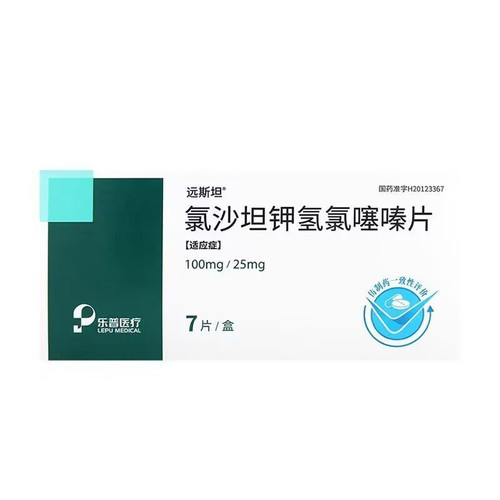Product Overview
[Drug Name]
Generic Name: Losartan Potassium Tablets
English Name: Losartan Potassium Tablets
Chinese Pinyin: Lushatanjia Pian
[Ingredients]
The main ingredient of this product is losartan potassium.
[Appearance]
This product is a white, teardrop-shaped, film-coated tablet with 960 engraved on one side and unprinted on the other side. It appears white after removal of the coating.
[Indications]
This product is indicated for the treatment of essential hypertension.
[Strength]
100 mg
[Dosage and Administration]
This product can be used with other antihypertensive medications. This product can be taken with or without food.
For most patients, the usual starting and maintenance dose is 50 mg once daily. Maximum antihypertensive effect is achieved after 3 to 6 weeks of treatment. In some patients, increasing the dose to 100 mg once daily may produce further antihypertensive effects. For patients with insufficient vascular volume (e.g., those taking high-dose diuretics), a starting dose of 25 mg once daily may be considered (see Precautions). No initial dose adjustment is necessary for elderly patients or patients with renal impairment, including those undergoing hemodialysis. A lower dose should be considered for patients with a history of hepatic impairment (see Precautions).
[Adverse Reactions]
See package insert for details.
[Contraindications]
This product is contraindicated in patients with hypersensitivity to any component of this product. This product should not be used concomitantly with aliskiren in patients with diabetes (see [Drug Interactions]).
[Precautions]
See package insert for details.
[Use in Pregnant and Lactating Women]
See package insert for details.
[Pediatric Use]
See package insert for details.
[Geriatric Use]
Based on the LIFE study, although both treatment groups effectively lowered blood pressure in black patients, the benefit of losartan compared with atenolol in reducing cardiovascular morbidity and mortality did not apply to black patients with hypertension and left ventricular hypertrophy. Among all patients participating in the LIFE study (n=9193), the risk of the primary composite endpoint of cardiovascular death, stroke, and myocardial infarction was reduced by 13% in the losartan group compared with the atenolol group (p=0.021). In the LIFE study, compared with atenolol, losartan reduced the risk of cardiovascular disease and death in non-black patients with hypertension and left ventricular hypertrophy (n=8660), as measured by the composite incidence of the primary clinical endpoint of cardiovascular death, stroke, and myocardial infarction (p=0.003). However, in this study, black patients in the atenolol group had a lower risk of experiencing the primary composite endpoint compared with those in the losartan group (p=0.03). In the subgroup of black patients (n=533; 6% of the patients in the LIFE study), 29 of 263 patients in the atenolol group (11%, 25.9 per 1000 patient-years) experienced the primary endpoint, compared with 46 of 270 patients in the losartan group (17%, 41.8 per 1000 patient-years).
[Drug Interactions]
See package insert for details.
[Overdose]
Data on human overdose are limited. The most likely manifestations of overdose would be hypotension and tachycardia. Due to parasympathetic (vagal) nerve stimulation, bradycardia may occur. If symptomatic hypotension occurs, supportive therapy should be administered. Neither losartan nor its active metabolites can be eliminated by hemodialysis.
[Clinical Trials]
See package insert for details.
[Pharmacology and Toxicology]
See package insert for details.
[Pharmacokinetics]
See package insert for details.
[Storage]
Store in a dark, airtight container in a dry place below 30°C.
[Packaging]
Aluminum-plastic sheet packaging, 7 tablets/sheet.
[Expiry Life]
36 months
[National Drug Approval Number]
National Drug Approval Number HJ20171081/HJ20171082/HJ20171083 (Check with the State Food and Drug Administration)
[Manufacturer]
Hangzhou Merck Pharmaceuticals Co., Ltd.







